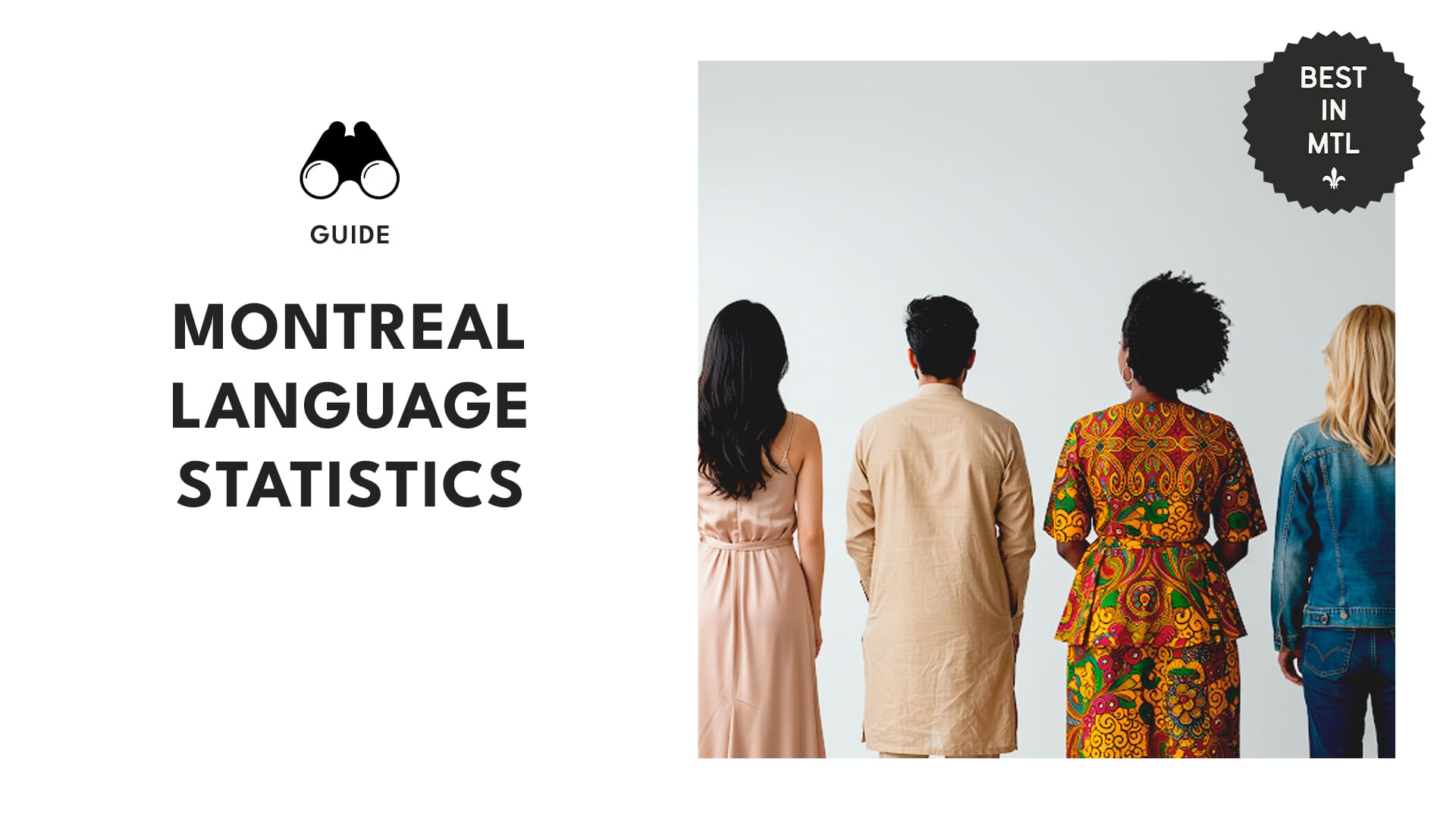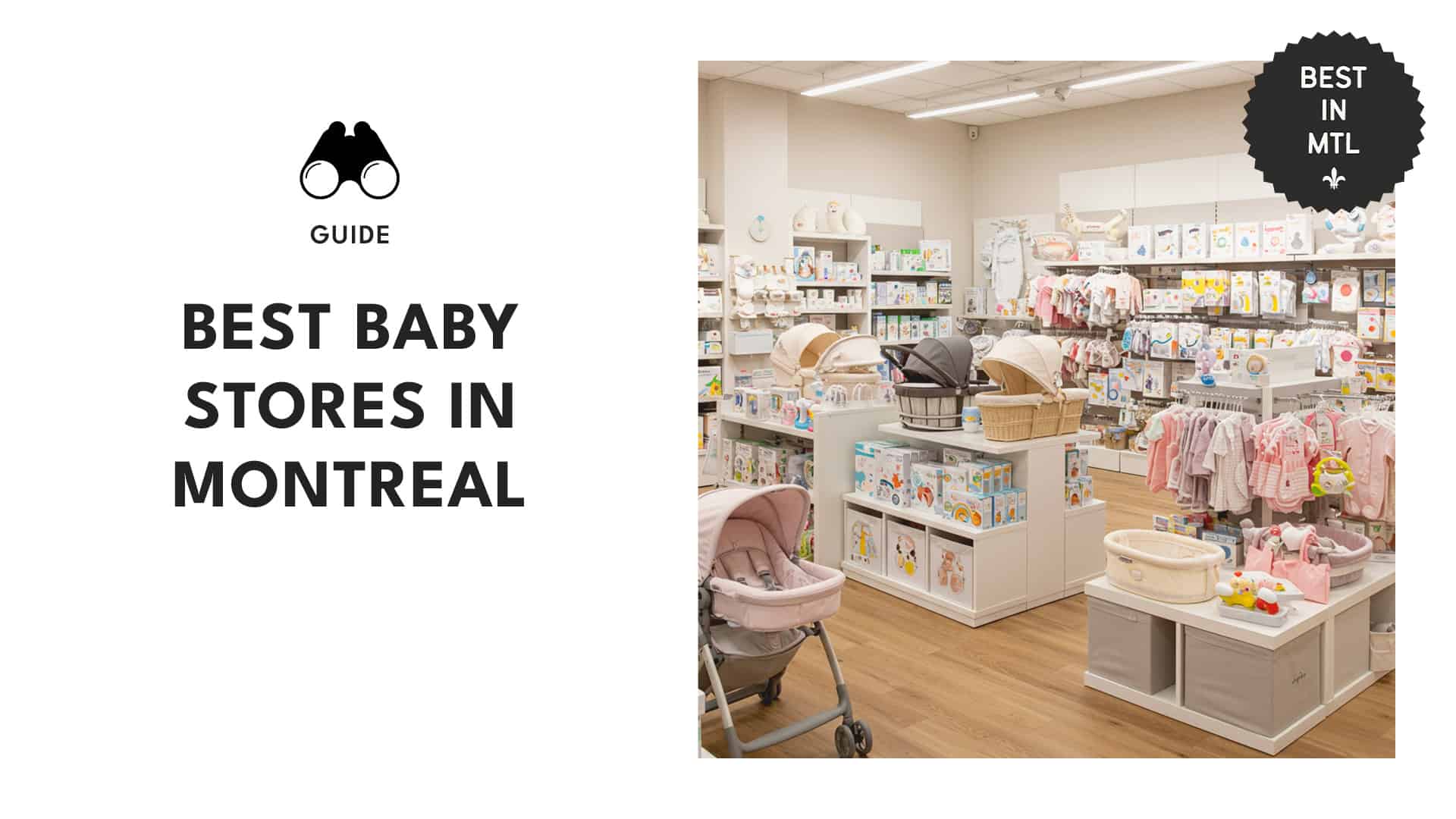Montreal Languages: Key Facts and Demographics in 2024
- Key Insights
- Official Languages in Montreal: French and English
- Immigration and Language Trends in Montreal
- Multilingualism Statistics in Montreal
- Language Usage in Education in Montreal
- Economic Impact of Languages in Montreal
- Government Policies and Language Preservation in Montreal
- Trends and Future Projections
- References
Key Insights
| According to the Government of Canada, Montréal’s strong bilingual identity is evident, with 2.91 million residents speaking both official languages in 2021. However, French remains dominant, as 1.43 million people were unilingual French speakers. CBC reported that Montréal’s linguistic diversity is evolving, with Indian languages like Malayalam, Telugu, and Marathi experiencing the fastest growth. There have also been increases in Tamil, Bengali, and Swahili speakers in surrounding areas. As per the Ministère de l’Éducation, Quebec’s education system prioritizes French. Strict regulations ensure most students receive instruction in French until the end of secondary school, while higher education offers more flexibility with English-language options. Montreal’s workforce is highly multilingual, with 80% of workers being at least bilingual and 28% trilingual, according to Statistics Canada. |
Montreal’s linguistic diversity is evolving rapidly. It’s shaped by immigration, demographic shifts, and language policies.
According to Statista, approximately 1.23 million men and 1.68 million women in the city were bilingual in 2021. However, French remains dominant, with around 1.43 million people speaking only French.
Moreover, Montreal’s workforce is among the most multilingual in Canada. Statistics Canada reports that 80% of workers in the metropolitan area are at least bilingual, with 69% fluent in both English and French.
As Montreal’s population grows and diversifies, its linguistic landscape is undergoing significant change.
Official Languages in Montreal: French and English
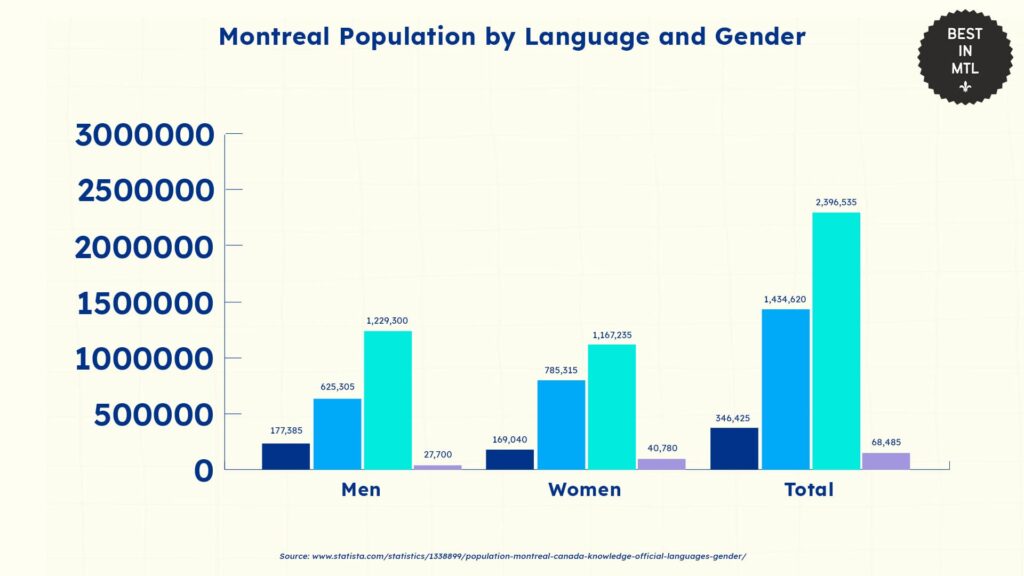
According to the Government of Canada, the enactment of the Official Languages Act in 1969 marked a turning point in Canadian history.
The Act officially recognised both English and French as equal, aiming to bridge linguistic disparities and promote bilingualism as part of the national identity.
According to Statista, approximately 1.23 million men and 1.68 million women in the city were bilingual in 2021. This reflects the strong presence of both official languages in daily life, a defining feature of Montreal that distinguishes it from other cities in Canada.
Despite this widespread bilingualism, a substantial segment of the population remains unilingual, with French being the dominant language. In 2021, approximately 1.43 million people in Montreal spoke only French.
Additionally, a small but notable portion of the population did not speak either of Canada’s official languages. More than 68,400 individuals fell into this category, with women outnumbering men.
Immigration and Language Trends in Montreal
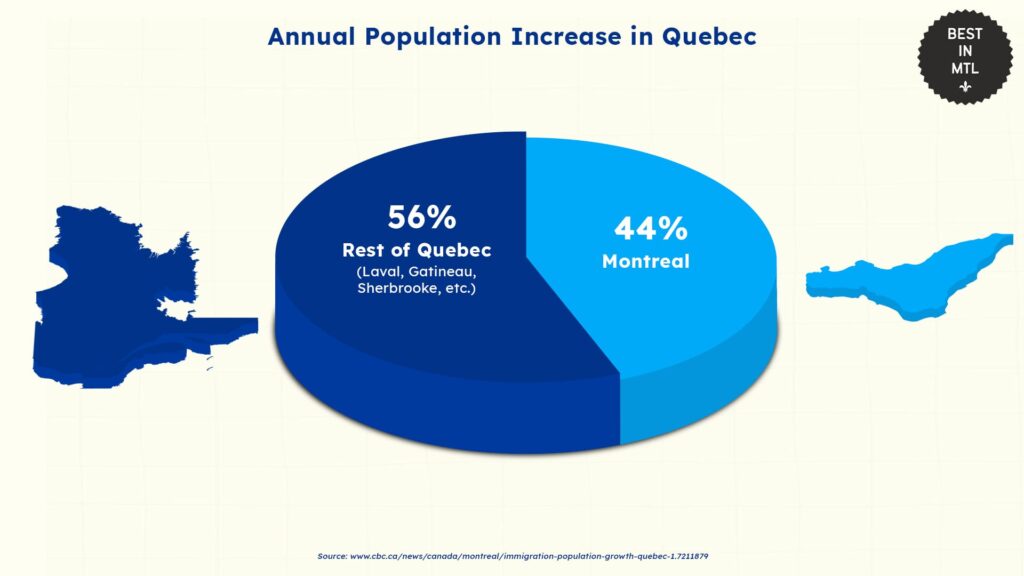
As reported by the CBC, Quebec experienced widespread population growth between July 2022 and July 2023, with Montreal and Quebec City leading the way.
Montreal saw the most substantial increase, with its population rising by 89,600, marking a 4.3% growth. This rate far exceeded Quebec’s overall population growth of 2.3% during the same period.
Montreal alone accounted for 44% of the province’s total annual population increase.
According to CTV News, Quebec’s population grew by approximately 208,000 people. This represents a 2.3% increase, which is the highest annual growth recorded since data collection began in the early 1970s.
Premier François Legault also noted that the number of temporary immigrants in Quebec had doubled in just two years, reaching 600,000 in 2024, up from 300,000 in 2022.
With the rise of immigration in Quebec and Montreal, multilingualism (as influenced by various nationalities residing and working in the city) is also expected to increase in 2025 and beyond.
Multilingualism Statistics in Montreal
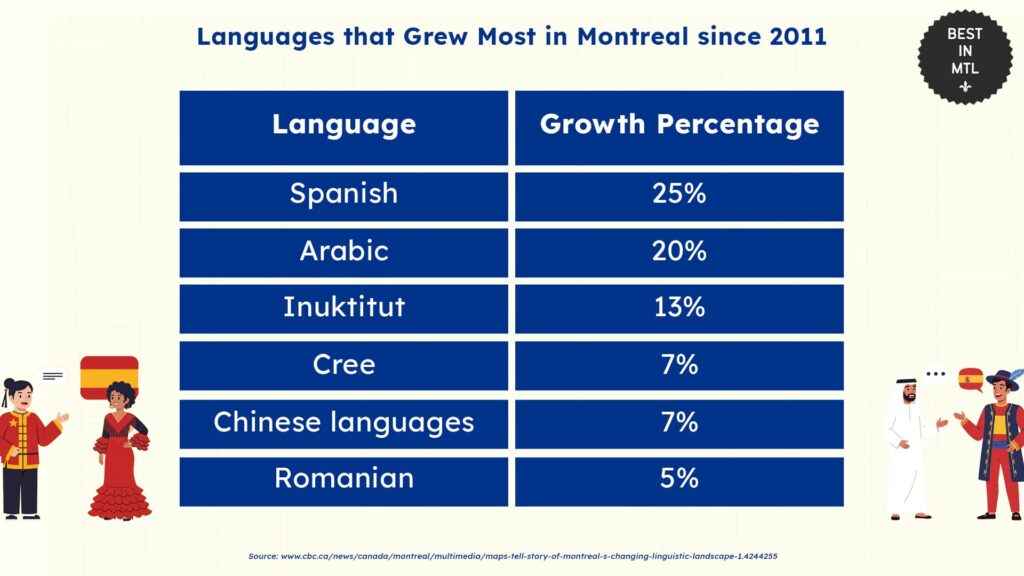
According to CBC, more than 20% of Canadians reported speaking a language other than English or French at home, and a similar proportion indicated using multiple languages in daily life.
Montreal’s immigrant population has historically been dominated by Italians, Greeks, Portuguese, and Caribbean communities. However, recent immigration patterns indicate a shift.
This shift is especially notable in Montreal, as the city continues to attract immigrants who contribute to its linguistic landscape.
The latest census data reveals that Indian languages (particularly Malayalam, Telugu, and Marathi) are the fastest-growing in the city.
Although the numbers remain relatively small—Malayalam speakers increased from 140 in 2011 to 250 in 2016, suggesting a growing Indian immigrant presence
In Laval, Tamil and Bengali speakers have also seen notable increases. Meanwhile, the number of Swahili speakers doubled in five years, reaching 120 people.
Beyond this data, it’s also worth noting that Quebec’s immigration policies prioritise French-speaking newcomers or those with linguistic ties to French. This is why Spanish and Italian are also predominant non-official languages in Montreal.
In fact, census data shows that 25 municipalities in Quebec saw an increase in Spanish speakers, while Arabic grew in 20 municipalities.
Language Usage in Education in Montreal
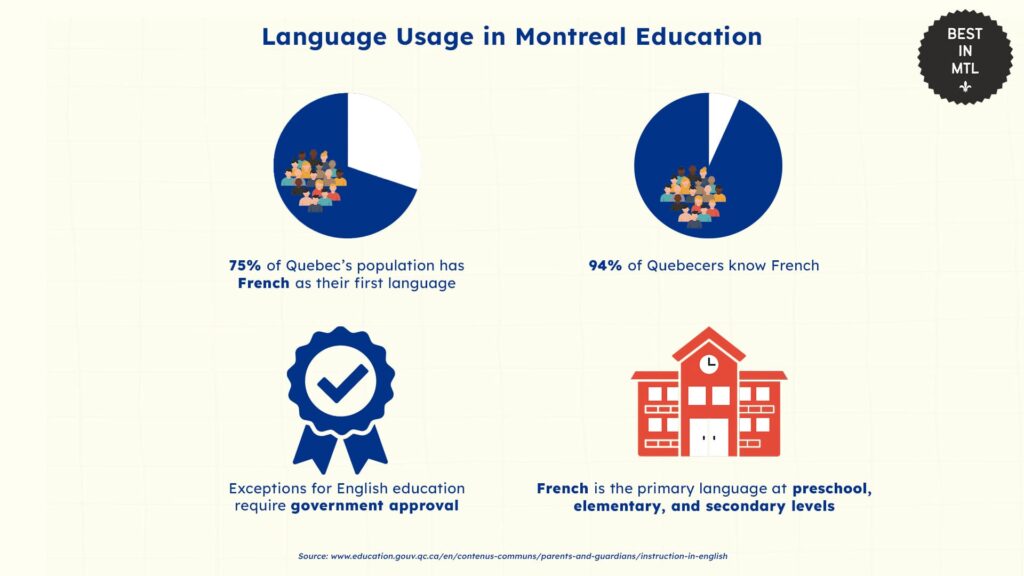
Montreal’s education system reflects Quebec’s strong emphasis on the French language.
According to Ministère de l’Éducation, about 75% of Quebec’s population has French as their first language, while 94% report knowing French. As a result, French is the primary language of instruction across the province.
The Charter of the French Language mandates that all children must be educated in French until the end of secondary school in public and subsidised private institutions.
French remains the primary language of instruction at the preschool, elementary, and secondary levels. The only exception is students granted permission to study in English.
In higher education, however, language options are more flexible. Colleges (CEGEPs) and universities operate in both French and English. For example, McGill University and Concordia University offer full English-language programs.
Eligibility for English instruction is strictly regulated, with applications processed by the Ministère de l’Éducation. These provisions apply to specific cases, such as children of parents who were educated in English in Canada
Economic Impact of Languages in Montreal
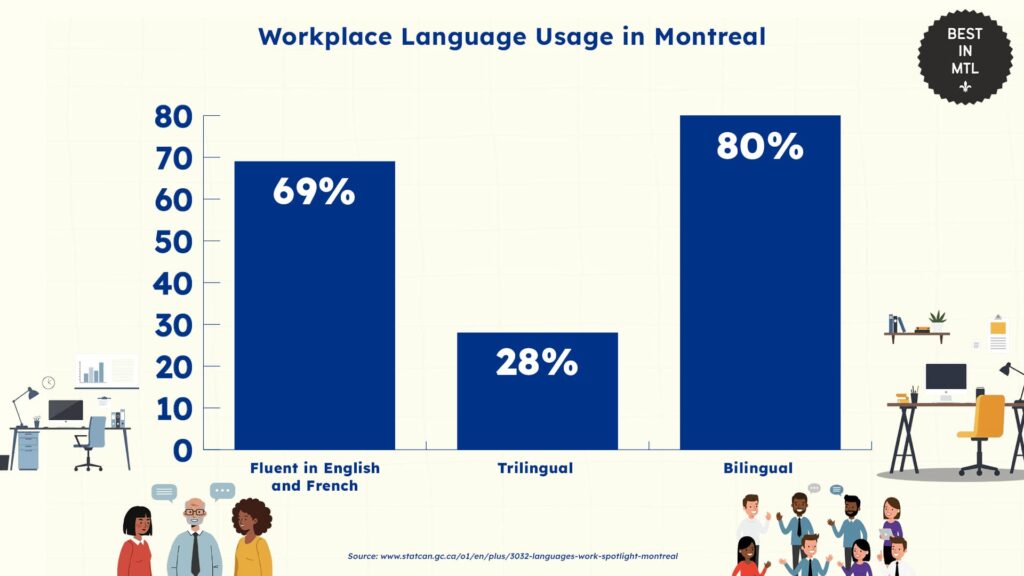
Unlike other major Canadian cities, Montreal has a strong English-speaking minority and high rates of multilingualism.
According to Statistics Canada, 80% of workers in the Montreal metropolitan area are at least bilingual. 69% of those are fluent in both English and French.
Moreover, 28% of workers are trilingual, the highest proportion among Canada’s major urban centres.
This high level of multilingualism enhances economic opportunities by making Montreal an attractive destination for international businesses.
When it comes to workplace language usage, 70% of Montreal workers primarily use French. Meanwhile, 21% of workers primarily use English, and 8% report using English and French equally.
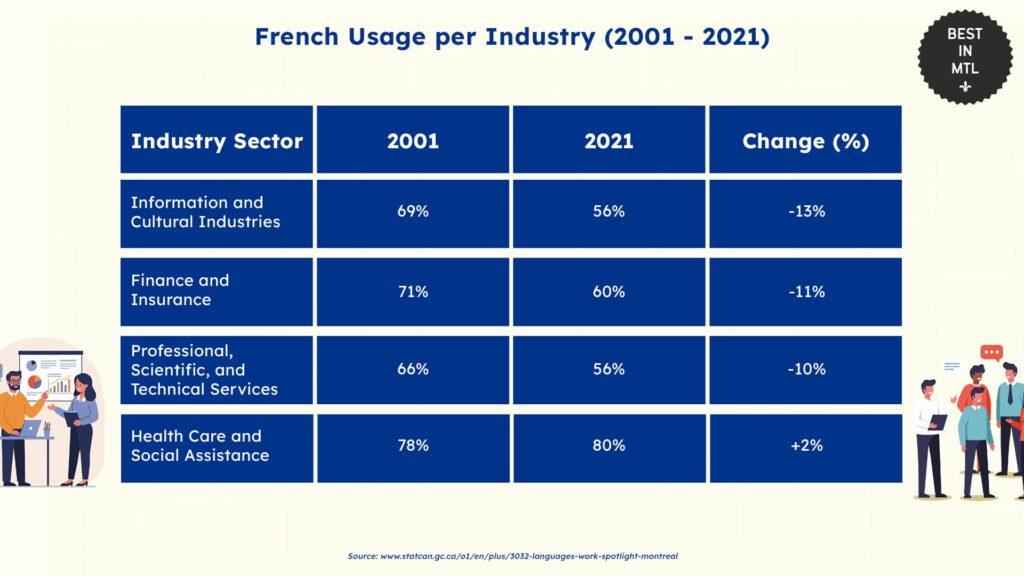
Languages also have an influence in various sectors.
Between 2001 and 2021, French usage dropped from 69% to 56% in the information and cultural industries. In finance insurance, it fell from 71% to 60%. It also decreased from 66% to 56% in professional, scientific, and technical services.
These declines suggest increasing linguistic diversity in high-skilled sectors, potentially influenced by globalisation and the growing presence of English in international business.
However, not all industries followed this trend. The health care and social assistance sector saw an increase in French as the main working language, rising from 78% to 80%.
Government Policies and Language Preservation in Montreal
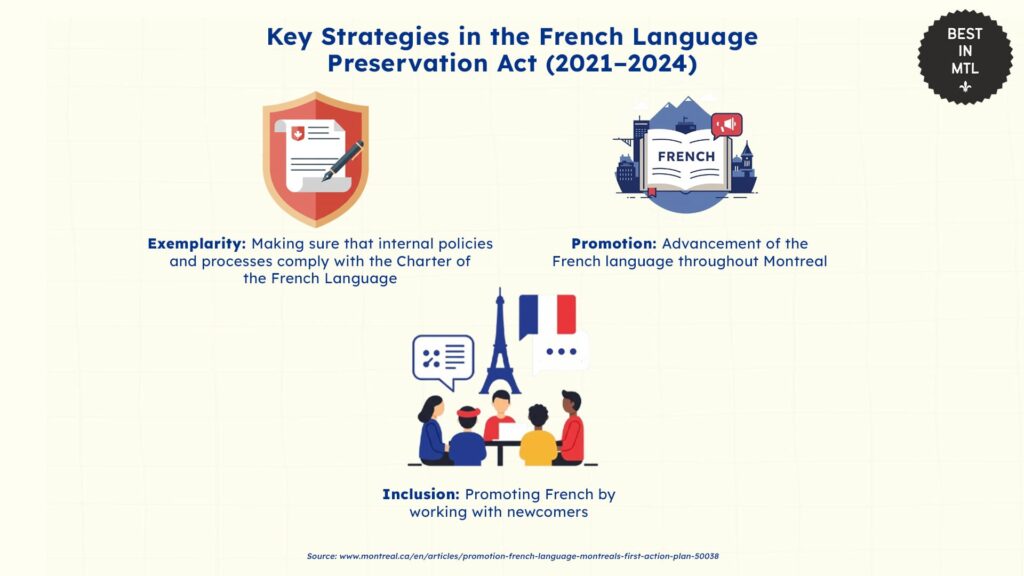
Montreal, as the largest French-speaking city in North America, has implemented policies to preserve and promote the use of French.
According to Montreal.ca, the French Language Preservation Act (2021–2024) is an essential part of language preservation. This focuses on helping newcomers integrate through French.
The city’s approach to language preservation is structured around three key strategies: exemplarity, promotion, and inclusion.
Montréal reinforces its identity as a French-speaking metropolis through these policies while embracing its diverse cultural landscape.
In Canada as a whole, Montréal’s language policies are shaped by the broader framework of the Official Languages Act (OLA).
As per the Government of Canada, this act ensures that both English and French remain integral to public institutions. A key objective is to guarantee that the public can access services in either language.
Beyond public services, the policy also safeguards language rights in the workplace. Employees working in federally regulated institutions have the right to use their preferred official language,
Trends and Future Projections
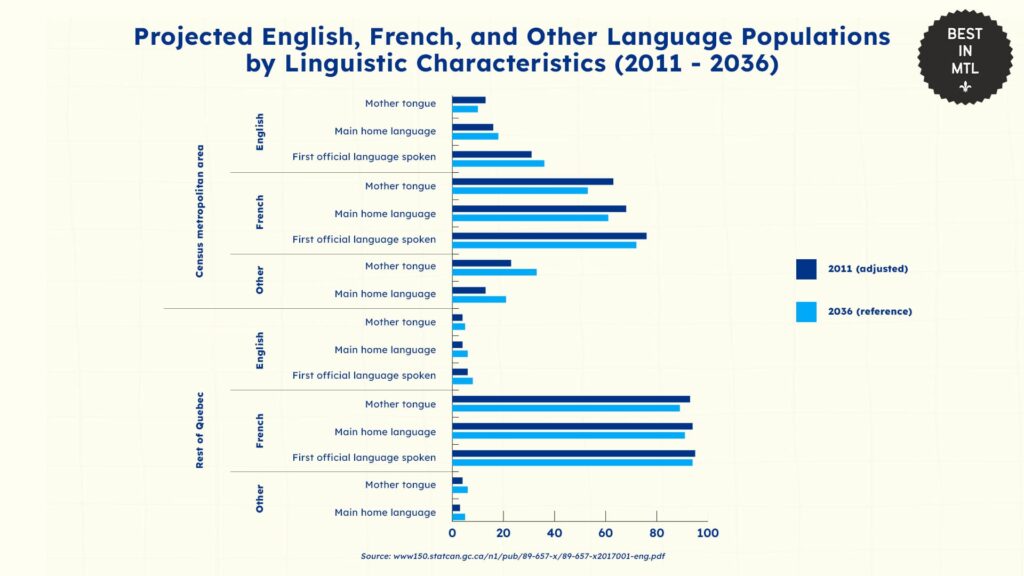
According to Statistics Canada, language diversity in the Montréal census metropolitan area (CMA) has been evolving.
Projections for 2036 suggest that the proportion of French speakers in the CMA will decline across all three language categories (mother tongue, home language, and first official language spoken).
However, the decrease in FOLS will be less pronounced due to language adoption by non-official-language speakers.
Conversely, the English-speaking population is expected to grow in all scenarios, particularly in terms of home language and FOLS.
Montreal Island
Montréal Island’s linguistic composition is set to shift between 2011 and 2036, with both French- and English-mother-tongue populations declining, as per Statistics Canada.
French mother tongue is projected to fall from 48% to 41 to 44%, while French as a home language may drop to 50%.
Despite this, the French FOLS population could see a slight rise from 64.5% to 65%, largely due to immigration policies favouring French speakers.
Similarly, English mother tongue may decline from 18% to 15 to 16%. English FOLS, however, is expected to hold steady at around 34%, indicating sustained bilingualism.
The non-official mother-tongue population is also expected to increase by 10 percentage points in 2036, potentially reaching 43%. In a high-immigration scenario, non-official mother-tongue speakers could make up 44.8%.
Off Montreal Island
Non-official-language populations are projected to grow significantly, according to Statistics Canada. In 2011, non-official mother tongue speakers made up 13% of the suburban population. This is expected to rise to 23 to 26% by 2036.
The proportion using a non-official language at home could also double by 2036, reaching over 14% in the high-immigration scenario.
Meanwhile, the English-speaking population is projected to remain below 20%, with English home language and FOLS growing faster than its mother-tongue population due to language transfers.
By 2036, the French mother tongue is projected to represent 67% of the off-Island population, while the French home language will account for 72%.
In terms of FOLS, French will still be the primary language for 81% of residents in the reference scenario. However, suburban Montréal will continue to diversify, driven by immigration and shifting linguistic preferences.
References
- CBC. Maps tell story of Montreal’s changing linguistic landscape (2017). https://www.cbc.ca/news/canada/montreal/multimedia/maps-tell-story-of-montreal-s-changing-linguistic-landscape-1.4244255
- CBC. Immigration fuels population growth across Quebec, statistics institute says (2024). https://www.cbc.ca/news/canada/montreal/immigration-population-growth-quebec-1.7211879
- CTV News. Immigration leads to record population growth in several Quebec regions (2025). https://www.ctvnews.ca/montreal/article/immigration-leads-to-record-population-growth-in-several-quebec-regions/
- Government of Canada. English and French (2021): Towards a substantive equality of official languages in Canada. https://www.canada.ca/en/canadian-heritage/corporate/publications/general-publications/equality-official-languages.html
- Government of Canada. Policy on Official Languages (n.d.). https://www.tbs-sct.canada.ca/pol/doc-eng.aspx?id=26160
- Ministère de l’Éducation. Eligibility for instruction in English (n.d.). https://www.education.gouv.qc.ca/en/contenus-communs/parents-and-guardians/instruction-in-english
- Ministère de l’Éducation. Québec education system (n.d.). https://www.quebec.ca/en/education/study-quebec/education-system
- Montrel.ca. Promotion of the French language: Montréal’s first action plan (2024). https://montreal.ca/en/articles/promotion-french-language-montreals-first-action-plan-50038
- Statista. Number of people living in Montréal, Québec in Canada in 2021, by knowledge of official languages and gender. https://www.statista.com/statistics/1338899/population-montreal-canada-knowledge-official-languages-gender/
- Statistics Canada. Languages at work: Spotlight on Montréal (2023). https://www.statcan.gc.ca/o1/en/plus/3032-languages-work-spotlight-montreal
- Statistics Canada. Language Projections for Canada, 2011 to 2036 (2017). https://www150.statcan.gc.ca/n1/pub/89-657-x/89-657-x2017001-eng.pdf







